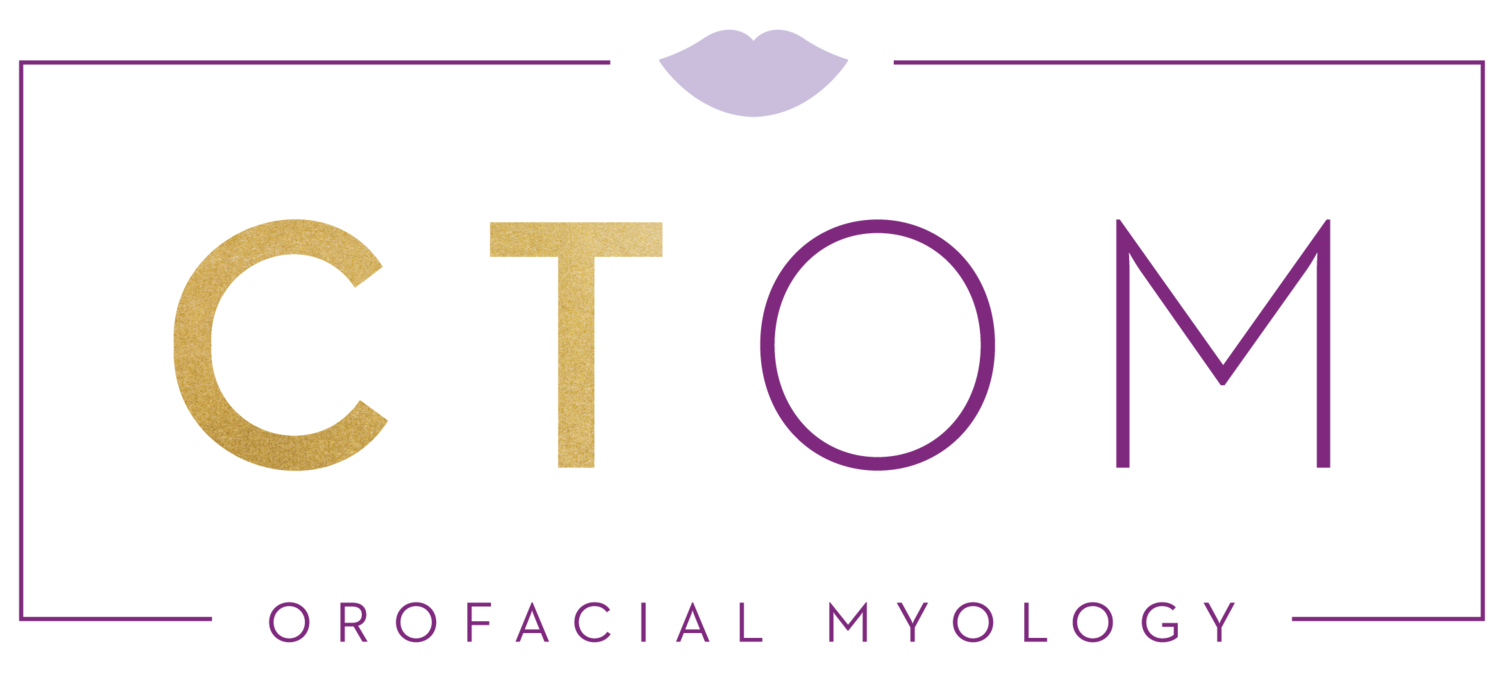FAQ
What is orofacial myofunctional therapy? What are the goals?
What is orofacial myofunctional therapy? What are the goals?
The neuromuscular re-education or re-patterning of the oral and facial muscles. Therapy includes facial and tongue exercises and behavior modification techniques to promote proper/optimal tongue position, improved breathing, chewing, and swallowing. This in turn affects overall, whole body health.
Why haven’t I ever heard of Myofunctional therapy?
Why haven’t I ever heard of Myofunctional therapy?
Myofunctional therapy has been around for over 100 years. It is gaining popularity rapidly, but is not widely understood or applied. Most providers: dentists, orthodontists, ENTs, pediatricians, speech pathologists never learned about or were trained in myofunctional therapy as part of their dental or medical training, or graduate level training. More healthcare providers are learning and understanding that oral health is the gateway to whole body health.
How does Myofunctional therapy work / How many sessions will I need?
How does Myofunctional therapy work / How many sessions will I need?
Orofacial myofunctional therapy is a holistic based therapy. I teach my patients oral and facial exercises and behavior medication techniques that promote proper/optimal tongue position, improved breathing, chewing, and swallowing. I teach my patients to rest their tongue in the roof of their mouth, breathe dominantly through the nose, and back teeth together swallow. My patients become so aware of their oral and facial muscles, and the way they function independently and harmoniously.
What is tongue-tie?
What is tongue-tie?
Tongue-tie is when the lingual frenum is tethered to the floor of the mouth. The frenum can be too short, thick, or taut restricting the movement and function of the tongue. Age should not be a deterrent from getting a release of a tethered oral tissue. We have had patient’s in their 60’s receive frenum releases.
What is tongue thrust?
What is tongue thrust?
A tongue thrust may be caught by your dentist, orthodontist, or speech pathologist. During the swallowing process, the tongue comes forward, also known as an anterior tongue thrust. A posterior tongue thrust can also be present, on one side or both (uni-lateral or bi-lateral). This is when the tongue thrusts, or pushes out toward the sides. A tongue thrust can be a sign of an airway issue.
Why is mouth breathing bad for my health?
Why is mouth breathing bad for my health?
Mouth breathing affects your overall health, including, but not limited to:
-Dry mouth/xerostomia, bad breath/halitosis
-Narrow palate, underdeveloped jaws
-TMJ pain
-Orthodontic and dental treatment relapse
-Dry/cracked lip
-Drooling day/night time
-Infected tonsils, enlarged tonsils/adenoids
-Sleep disordered breathing, umbrella term
-Symptoms paralleling ADD/ADHD
-Fatigued/foggy brain
-Long face, changes to facial appearance
-Digestive issues
What can cause an open bite?
What can cause an open bite?
Harmful habits like prolonged pacifier use or a thumb sucking habit. Dysfunctional patterns like mouth breathing or improper tongue rest posture at rest, during speech and/or swallowing.
What age should therapy begin?
What age should therapy begin?
At CT Orofacial Myology, we see patients/clients of all ages. Children, beginning at age 4 of 5, can be enrolled in a mini myo program or habit/sucking elimination program. Toddlers may be receiving a tethered oral tissues release and require myofunctional therapy pre and post release. Older children, teenagers, and adults of all ages are great candidates for orofacial myofunctional therapy programs. They can attain, long lasting and stable results.
Do I need Myofunctional therapy before my tongue-tie release?
Do I need Myofunctional therapy before my tongue-tie release?
YES! For an optimal release of a tethered oral tissue, pre and post op therapy are KEY.
Pre-Therapy: Myofunctional therapy prior to the release prepares the muscles for what's to come. Just because your tongue will have this new range of motion does not mean your tongue will automatically start functioning on full, or know what to do or where to go. The pre-therapy allows us to begin re-education of the muscles for the newly gained range of motion and to move functionally.
Post-Therapy:
1. Active Wound Management: Active wound management reduces the risk of possible scarring. If sutures are not being placed, active wound management becomes even more essential. We must ensure proper healing by secondary intention.
2. Neuromuscular Re-education: The goals of myofunctional therapy include obtaining a proper oral rest posture which includes tongue resting in the roof of the mouth, lip competence, and exclusive nasal breathing, and optimal chewing and swallowing patterns.
How much does Myofunctional therapy cost?
How much does Myofunctional therapy cost?
Cost of therapy can vary based on therapist/provider and region.
-Sessions are generally charged per visit or as a full myofunctional therapy program consisting of a number of prescribed sessions. Individual sessions can range from $100-$250/session.
-Myofunctional Therapy Programs can range from $1400-$3000.


